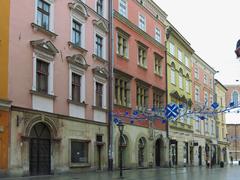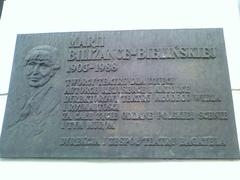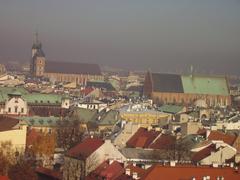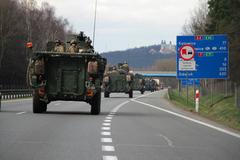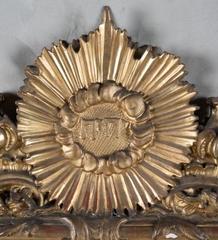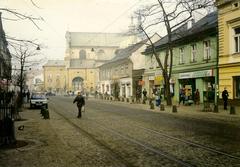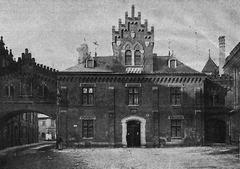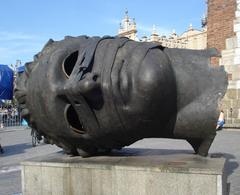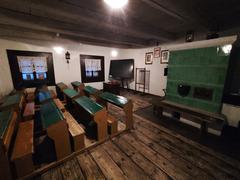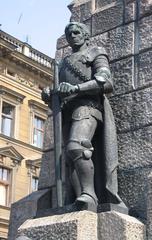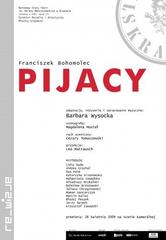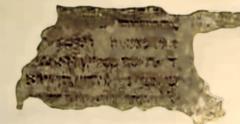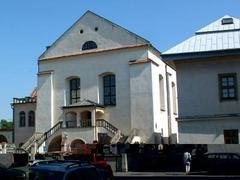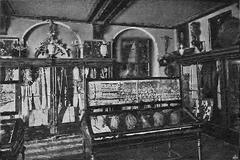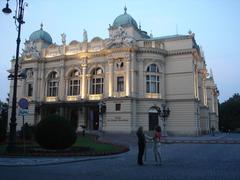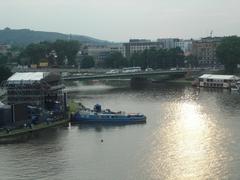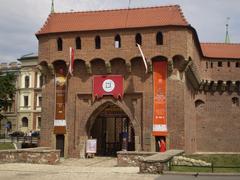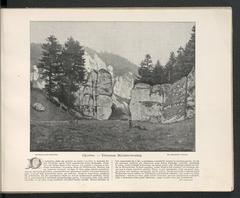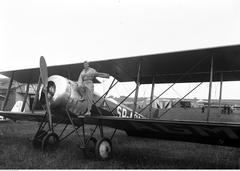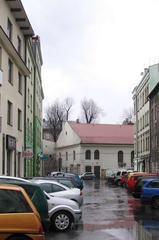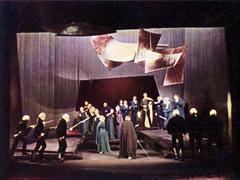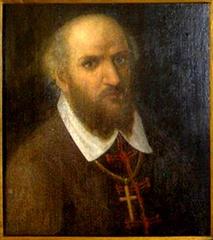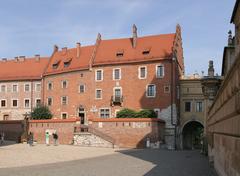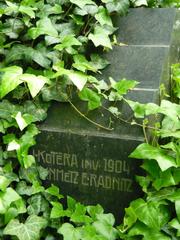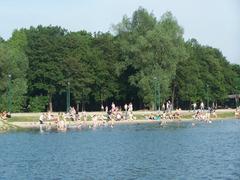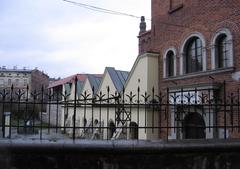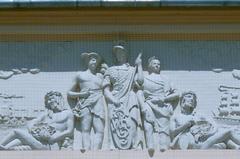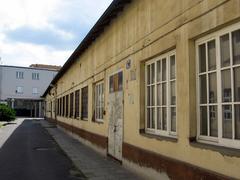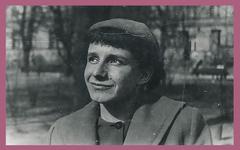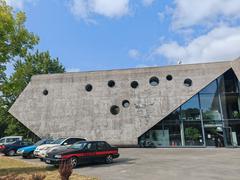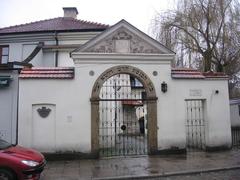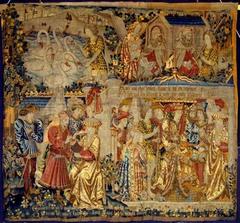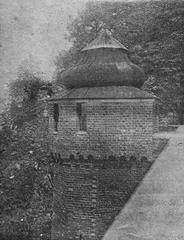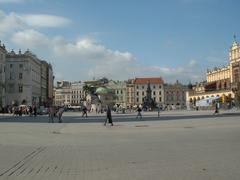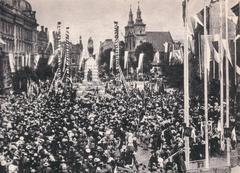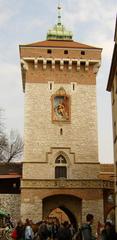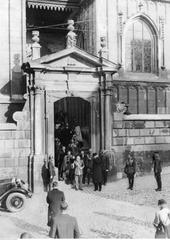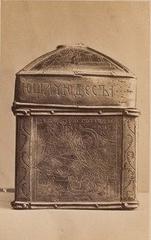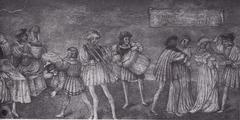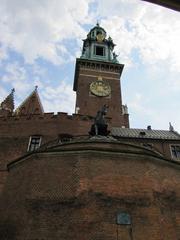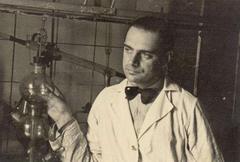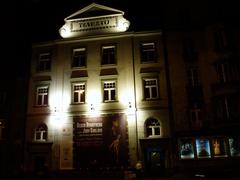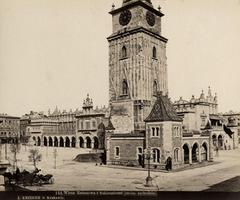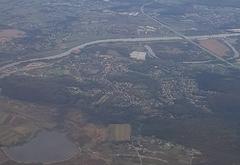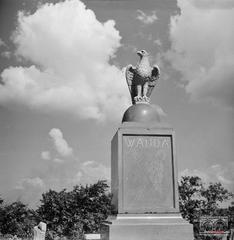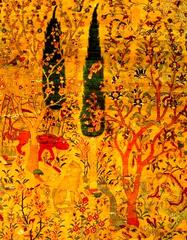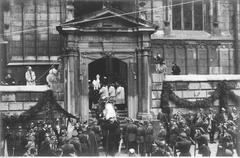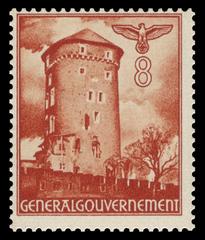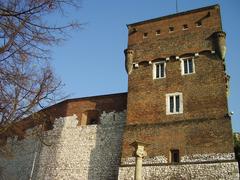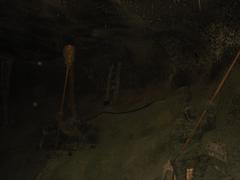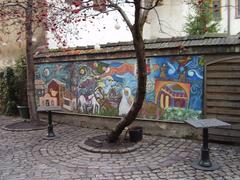Fort Barycz Kosocice Krakow: Visiting Hours, Tickets, and Travel Guide
Date: 04/07/2025
Introduction
Fort Barycz, also known as Fort Kosocice or Fort 50 ½ O “Barycz,” is a significant remnant of Kraków’s late 19th-century Austro-Hungarian military heritage. Constructed between 1892 and 1896 as part of the formidable Kraków Fortress system, the fort served as a bastion against threats from the city’s southern approaches. Today, while public access is limited, Fort Barycz stands as both a monument to military innovation and an evolving cultural site, drawing heritage enthusiasts, historians, and curious visitors to Kraków’s lesser-known historical landscape (Kraków Fortress overview, Fort Kosocice Foundation, Dni Twierdzy Kraków).
Table of Contents
- Historical Background and Military Significance
- Architecture and Technical Features
- Visiting Fort Barycz: Hours, Tickets, and Accessibility
- Cultural and Educational Initiatives
- Visitor Tips and Travel Information
- Preservation Challenges and Future Prospects
- Frequently Asked Questions (FAQ)
- References and Useful Links
Historical Background and Military Significance
Fort Barycz was developed as part of the outer ring of the Kraków Fortress system, a vast network of defensive structures designed to shield Kraków from modern artillery and infantry assaults in the late 1800s (Kraków Fortress overview). Its construction marked a shift in military engineering: reinforced concrete, earthworks, armored turrets, dry moats, and subterranean passages reflected the era’s technological advancements.
Strategically sited about 10 kilometers south of Kraków’s city center, Fort Barycz—alongside neighboring forts in Prokocim and Rajsko—guarded vital routes, including the Lwów road and the railway to Przemyśl. The fort’s overlapping fields of fire created a robust defensive network, especially during the Russian siege in World War I, where it served as a crucial strongpoint for the Austro-Hungarian defense of the city (Kraków Fortress details).
After World War I, the fort transferred to Polish authorities, later serving as a German storage site during World War II, and then as a civil defense facility in the Cold War era. While its military use has long ceased, the fort’s enduring structure remains a testament to both its historical role and architectural ingenuity.
Architecture and Technical Features
Layout and Defensive Innovations
Fort Barycz’s trapezoidal plot is encircled by a dry moat, reinforced at the corners by caponiers—defensive structures enabling flanking fire along the moat. The two-story central barracks-combat block, built of reinforced concrete and brick, incorporates steel armor in vulnerable areas and retains original details such as armored doors and gun shields (Fortyck.pl).
Key features include:
- Reinforced Concrete and Brick Construction: A response to advances in artillery, offering superior shell resistance.
- Armored Turrets: Originally equipped with Skoda-made retractable turrets for 8cm and 15cm artillery, providing 360-degree coverage. These were removed post-WWII.
- Moats and Caponiers: The dry moat and corner caponiers, accessed by underground passages, hindered infantry attacks and enabled defenders to sweep the ditch with fire.
- Subterranean Passages: Tunnels connected different sections, ensuring protected movement for troops and supplies.
- Observation Turret and Traditor: Enhanced artillery coordination and provided additional flanking fire.
The irregularly shaped barracks and the high earthwork concealing the main entrance reflect the fort’s adaptation to both topography and evolving defensive needs.
Visiting Fort Barycz: Hours, Tickets, and Accessibility
General Access
Fort Barycz is not open for unsupervised daily visits due to preservation concerns and safety. Public access is primarily offered during special guided tours, heritage festivals (such as Kraków Fortress Days), and cultural events. These are announced in advance by local organizations and the Fort Kosocice Foundation.
Visiting Hours and Tickets
- Regular Hours: No regular daily hours. Access is limited to special events, typically requiring advance booking (Dni Twierdzy Kraków, Fort Barycz Events).
- Tickets: Entry may be free during certain open days or require a paid ticket for guided tours and special activities. Always check event details and book in advance where required.
- Booking: Reservations are handled via event and foundation websites or local cultural organizations.
Accessibility
The historic layout poses challenges for visitors with limited mobility. Some guided events offer partial accessibility, but the terrain includes uneven surfaces, stairs, and narrow passages. Contact organizers in advance to discuss specific needs and available accommodations.
Getting There
- Location: Located in the Kosocice district, approximately 10km south of central Kraków.
- Public Transport: Reachable via city bus lines (e.g., line 194), though service may be less frequent than in central districts. Plan routes in advance (Full Suitcase Kraków Travel Tips).
- Parking: Limited on-site parking; cycling and taxi options are also available.
Cultural and Educational Initiatives
Fort Barycz is a focal point for community engagement, educational programs, and artistic projects. Since 2023, the Fundacja Fort Kosocice has spearheaded revitalization efforts, aiming to:
- Transform the site into an international residency for artists and a sculpture park.
- Host exhibitions, workshops, and performances that celebrate both Polish and international cultural heritage.
- Preserve the fort’s architectural integrity while making it more accessible to the public.
Annual events such as the “Kraków Fortress Run” draw families and history buffs alike, while creative workshops and educational tours connect visitors with Kraków’s military past. These initiatives align Fort Barycz with the city’s broader cultural calendar and heritage tourism strategy (Dni Twierdzy Kraków, Kraków Culture Calendar).
Visitor Tips and Travel Information
- Check Event Schedules: Confirm dates, times, and ticketing for events and tours on the official website.
- Dress Appropriately: Wear sturdy footwear and consider bringing a flashlight for dimly lit interior spaces.
- Plan for Minimal Facilities: Restrooms and food options are limited except during major events.
- Accessibility Needs: Contact organizers ahead of your visit for information on accessibility.
- Combine Visits: Explore nearby forts (Prokocim, Rajsko) and Kraków’s Old Town for a full historical experience.
Preservation Challenges and Future Prospects
Conservation Status
While Fort Barycz retains much of its late 19th-century structure, it faces challenges:
- Structural Integrity: Loss of original armaments and Cold War modifications have altered certain features. Overgrown moats and environmental factors require ongoing maintenance (Fortyck.pl).
- Restricted Access: The fort is generally closed to unsupervised visits to protect both visitors and the historic fabric.
- Urban Development: Nearby urbanization and zoning changes require careful management to preserve the fort’s context (bip.krakow.pl).
- Financial and Administrative Hurdles: Sustainable funding and responsible management are essential for future adaptive reuse.
Opportunities
- Adaptive Reuse: Potential as a museum, cultural center, or park focused on military history.
- Community Engagement: Local consultations and planning efforts aim to thoughtfully integrate the fort with the city’s urban development (krakow.pl).
- Digital Outreach: Virtual tours and online educational resources can broaden access and global interest.
Frequently Asked Questions (FAQ)
Q: What are Fort Barycz’s visiting hours?
A: The fort is open only during special events or guided tours. No regular visiting hours are available.
Q: Are tickets required?
A: Most events require advance reservation or ticket purchase. Some open days may offer free entry.
Q: Is the site accessible for people with disabilities?
A: Some areas are accessible during guided events, but much of the terrain is uneven and challenging. Contact event organizers for details.
Q: Are guided tours available?
A: Yes, but only during scheduled events and heritage days. Check event listings for updates.
Q: Can I visit independently?
A: No, independent access is restricted for safety and preservation reasons.
Q: Are there family activities?
A: Yes, certain events include family-friendly workshops and activities.
References and Useful Links
- Kraków Fortress overview
- Kraków Fortress tourism
- Dni Twierdzy Kraków – Fort Barycz
- Fort Barycz Events
- kk24.info – Fort Barycz Future
- Fortyck.pl – Fort Barycz Details
- bip.krakow.pl – Planning Documents
- Muzeum Twierdzy Kraków
- Kraków Culture Calendar
- Kraków Fortress Run
- Full Suitcase Kraków Travel Tips
- Visit Małopolska – Fort Kosocice
- krakow.pl – Community Planning
Visual Media
For images and virtual tours, visit the official Fort Barycz gallery and the Fundacja Fort Kosocice website.
(Alt text suggestions: “Fort Barycz Kraków historic walls”, “Kraków Fortress Run at Fort Barycz”, “Austro-Hungarian military fort in Kraków”.)
Summary
Fort Barycz remains a vital, if underappreciated, landmark in Kraków’s military, architectural, and cultural history. Its atmospheric ruins and robust structures invite exploration, study, and creative reuse. While access is limited, ongoing preservation and community efforts aim to secure the fort’s future as a dynamic heritage and cultural site. Visitors are encouraged to attend special events, support conservation initiatives, and make use of digital resources to appreciate the legacy of Fort Barycz.
For the latest updates, tours, and events, always check the official websites and local cultural listings. Download the Audiala app for guided audio tours and further explore Kraków’s remarkable historical sites.
